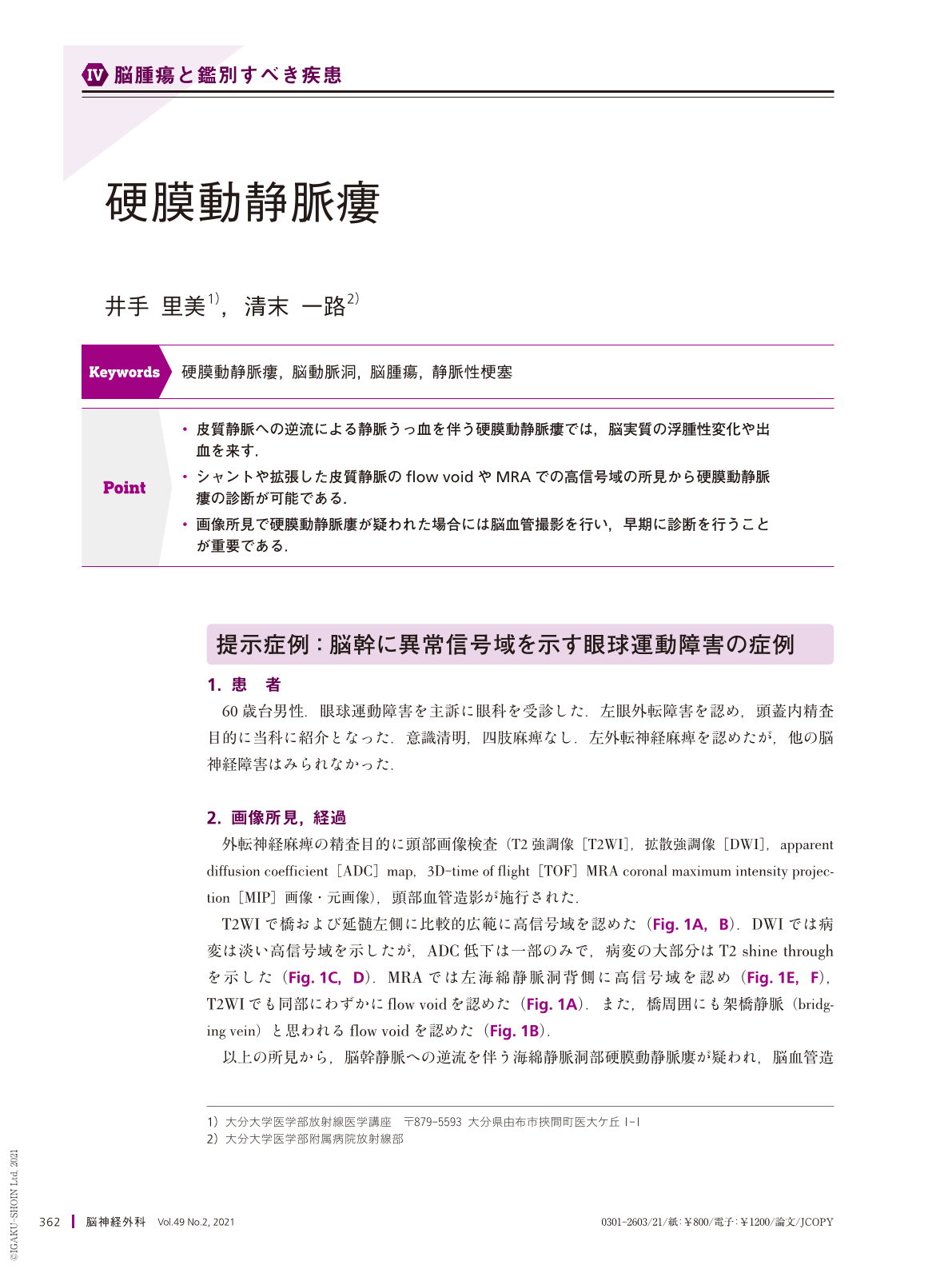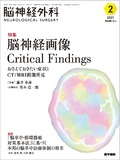Japanese
English
- 有料閲覧
- Abstract 文献概要
- 1ページ目 Look Inside
- 参考文献 Reference
Point
・皮質静脈への逆流による静脈うっ血を伴う硬膜動静脈瘻では,脳実質の浮腫性変化や出血を来す.
・シャントや拡張した皮質静脈のflow voidやMRAでの高信号域の所見から硬膜動静脈瘻の診断が可能である.
・画像所見で硬膜動静脈廔が疑われた場合には脳血管撮影を行い,早期に診断を行うことが重要である.
Dural arteriovenous fistulas(dAVFs), which are arteriovenous shunts between the dural/epidural artery and dural vein and/or dural venous sinus, can cause various symptoms, and the risk of aggressive symptoms such as cerebral hemorrhage and venous infarction mainly depends on venous drainage patterns in patients. Patients with dAVFs with cortical venous reflux have a high risk of aggressive symptoms due to cerebral venous congestion or varix rupture, and they often develop brain edema and/or hemorrhage. In some cases, patients with dAVFs may have CT and MRI findings similar to those of patients with brain tumors. Key MRI findings suggesting dAVFs include multiple small flow voids representing cortical venous reflux adjacent to the hemorrhage or edematous lesion on T2WI and dot-like high-signal-intensity patterns of the feeding arteries and draining veins on time-of-flight MR angiography source images. Cerebral angiography should be performed quickly when dAVFs are suspected with careful assessment using CT/MRI to prevent further worsening of symptoms, particularly for lesions involving the brain stem and cerebellum.

Copyright © 2021, Igaku-Shoin Ltd. All rights reserved.


